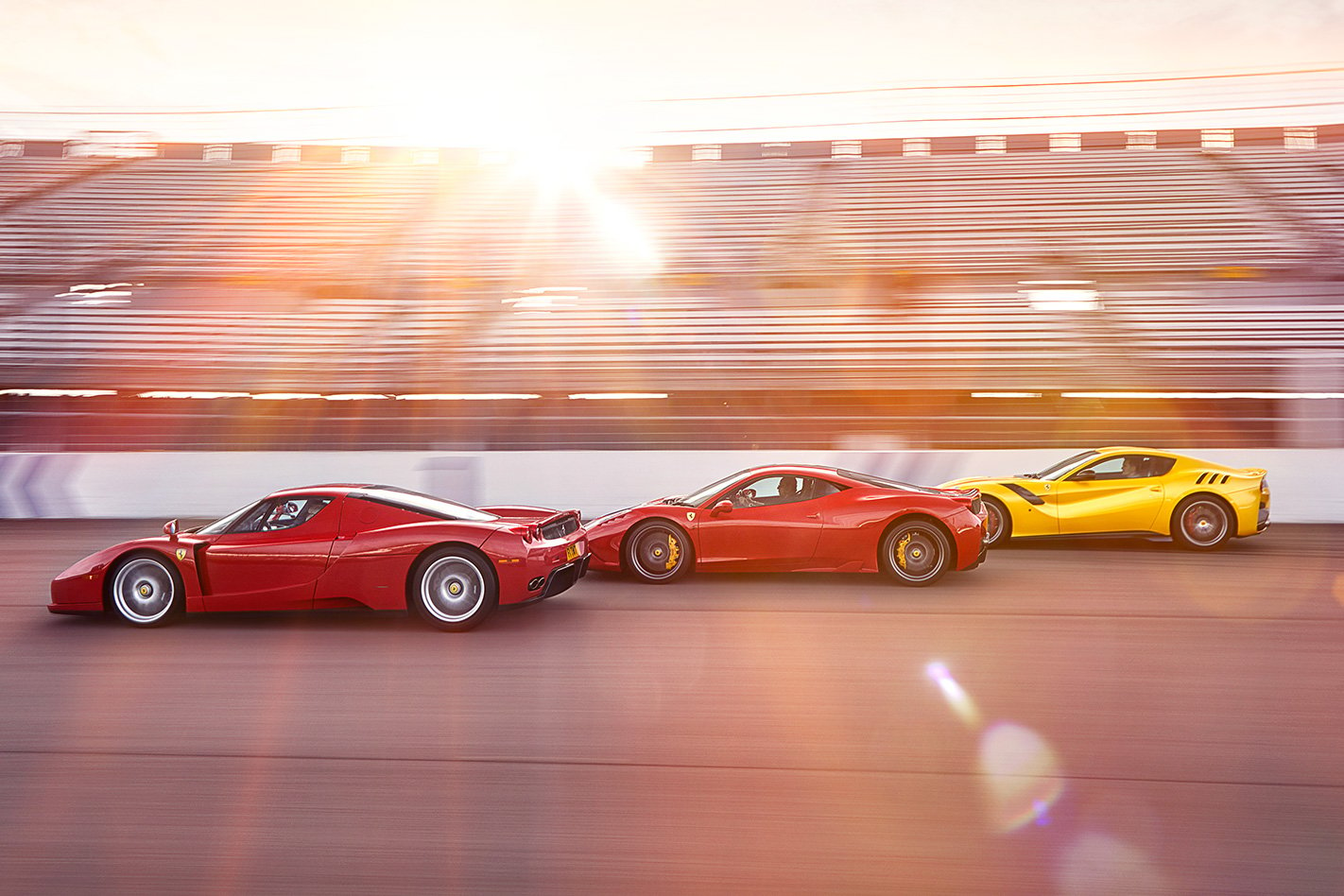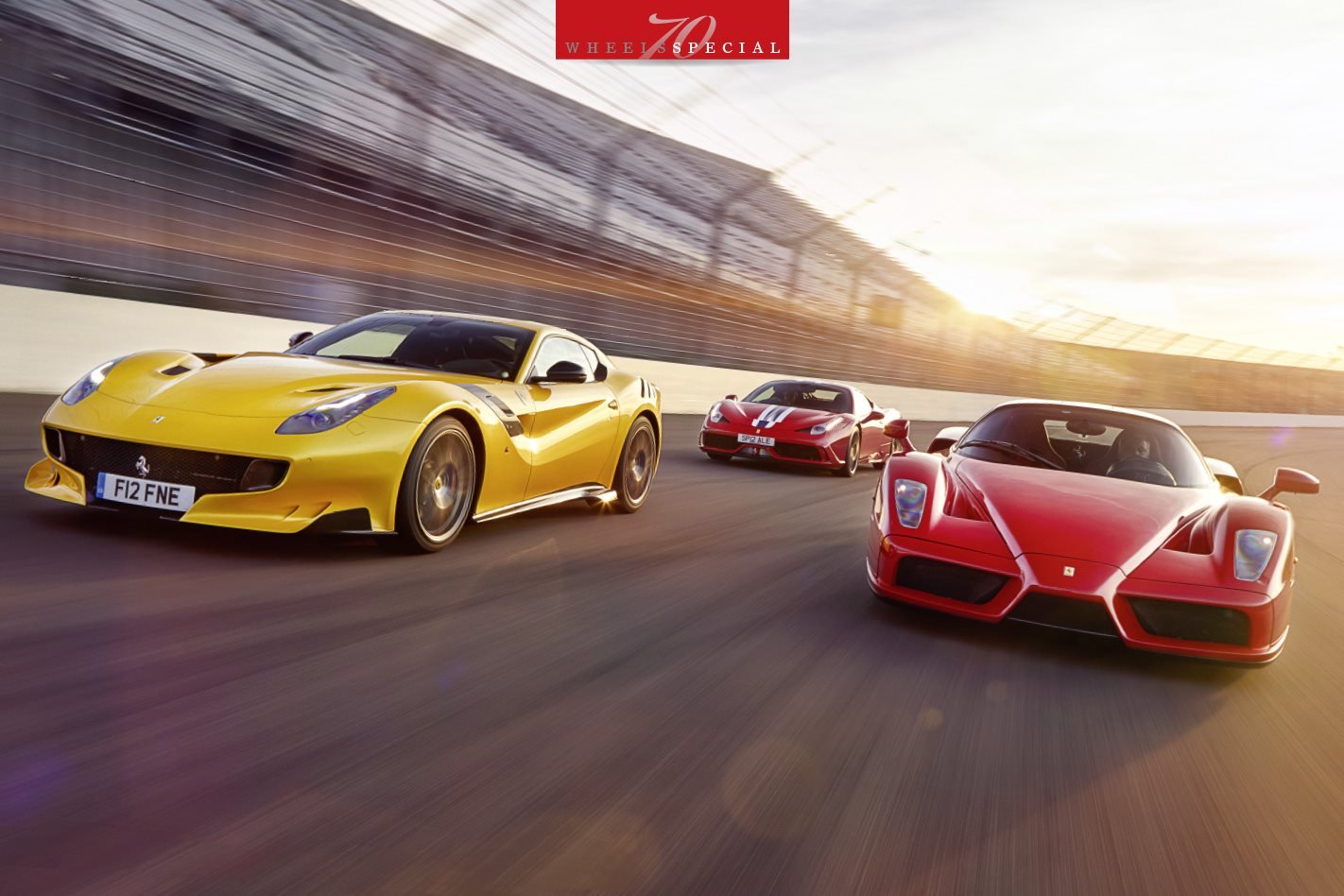OVER the past 70 years Ferrari has given us tiny V6s, monster 12s – bent and flat – and screaming eights. But they have almost – though not quite exclusively – shared one trait: until very recently they were all naturally aspirated machines.
Turbocharging is rife these days, and we understand why. It makes small engines perform like big ones everywhere except at the pumps.
Even Ferrari adopted turbocharging for its 458 successor, the 488 GTB, partly to cut emissions, but mainly because it couldn’t meet its power and performance targets with a driveable naturally aspirated engine. The resulting F154 engine is hugely impressive, but for us even the 488 is missing something that the older cars had – an organic connection you only get when there is zero lag between the movement of your foot and the punch in the back.
So to celebrate seven decades of instant gratification we’ve collected three of our recent favourites to represent the state of the naturally aspirated art: V12 Enzo, V8 458 Speciale, and V12 F12 tdf.
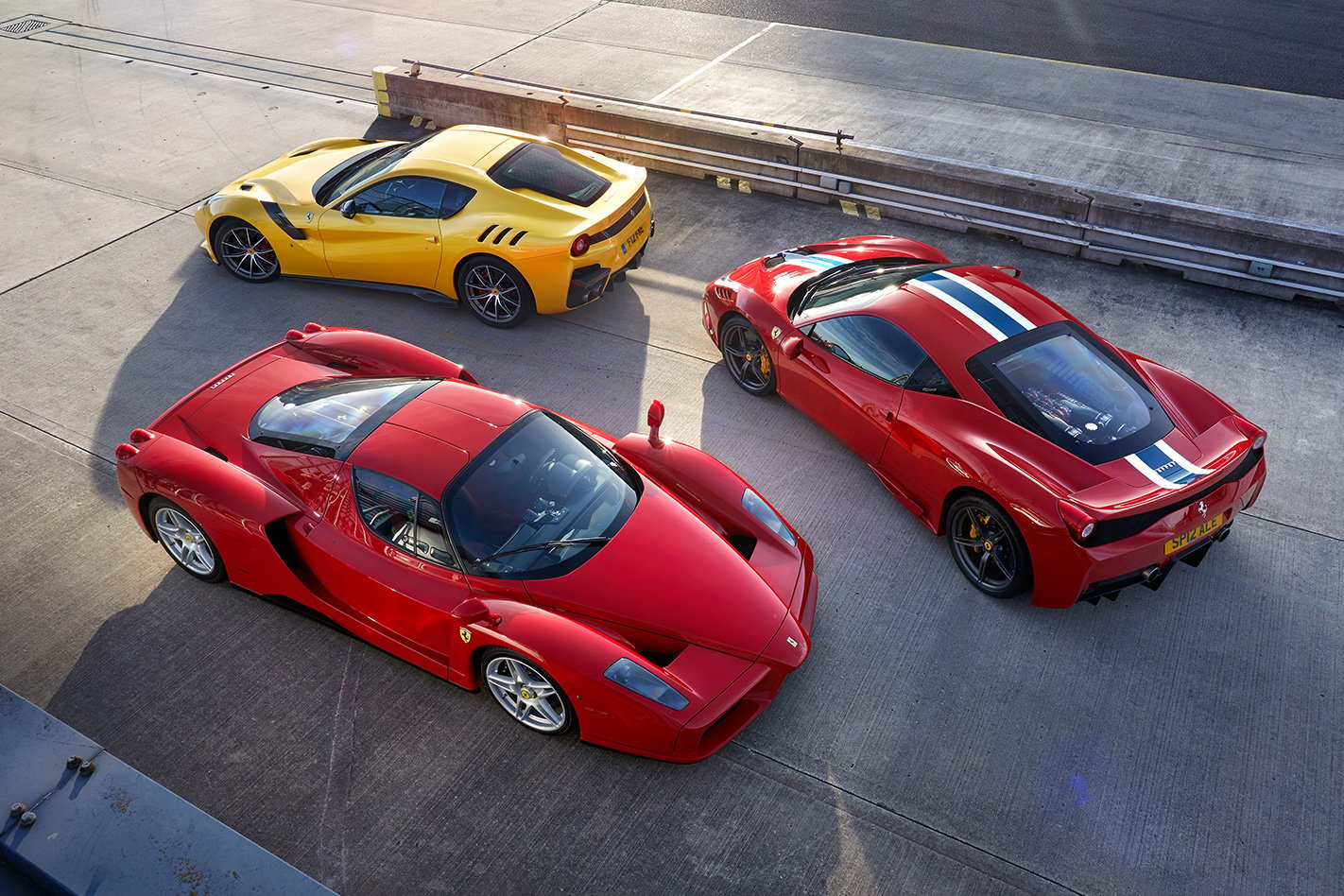
The Ferrari 458 was a game-changer. Not that the old F430 hadn’t been impressive, but even Ferrari engineers admit that beyond the new engine and active diff, it was more of a facelift on the 360 than a new car. But the 458 was the first Ferrari since the 1990s you could call beautiful, the first to get the hyper-quick steering that is now a Ferrari trademark feature, the first to be made available without the option of a manual transmission. It was the first junior Ferrari since the F355 to get you typing ‘kidney’ into eBay and selecting ‘completed listings’ to establish the going rate. Then, right at the end of 458 production, Ferrari did the impossible. It made a car that was even better.
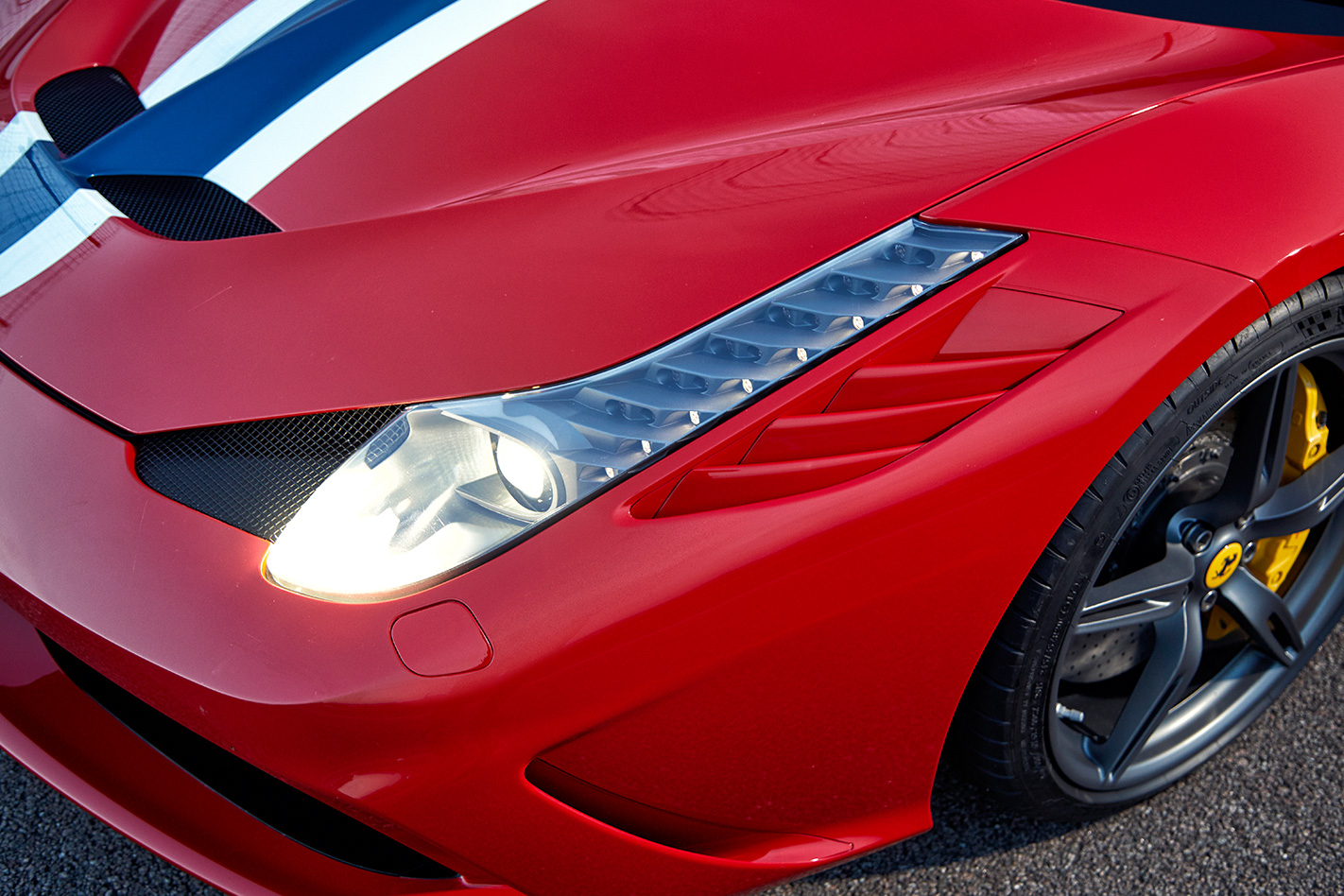
Some of that clever tech is visible below the rego plate, where flaps in the front grille open at speed to direct airflow underneath to balance the car. They’re paired with an electronically controlled diffuser to manage the way air exits the underbody: open for low drag in a straight line; closed to generate high downforce in corners. There’s nothing clever in the interior, other than the brain of any driver who can fathom how to operate either the VDA vehicle dynamics display or the nav/radio one.
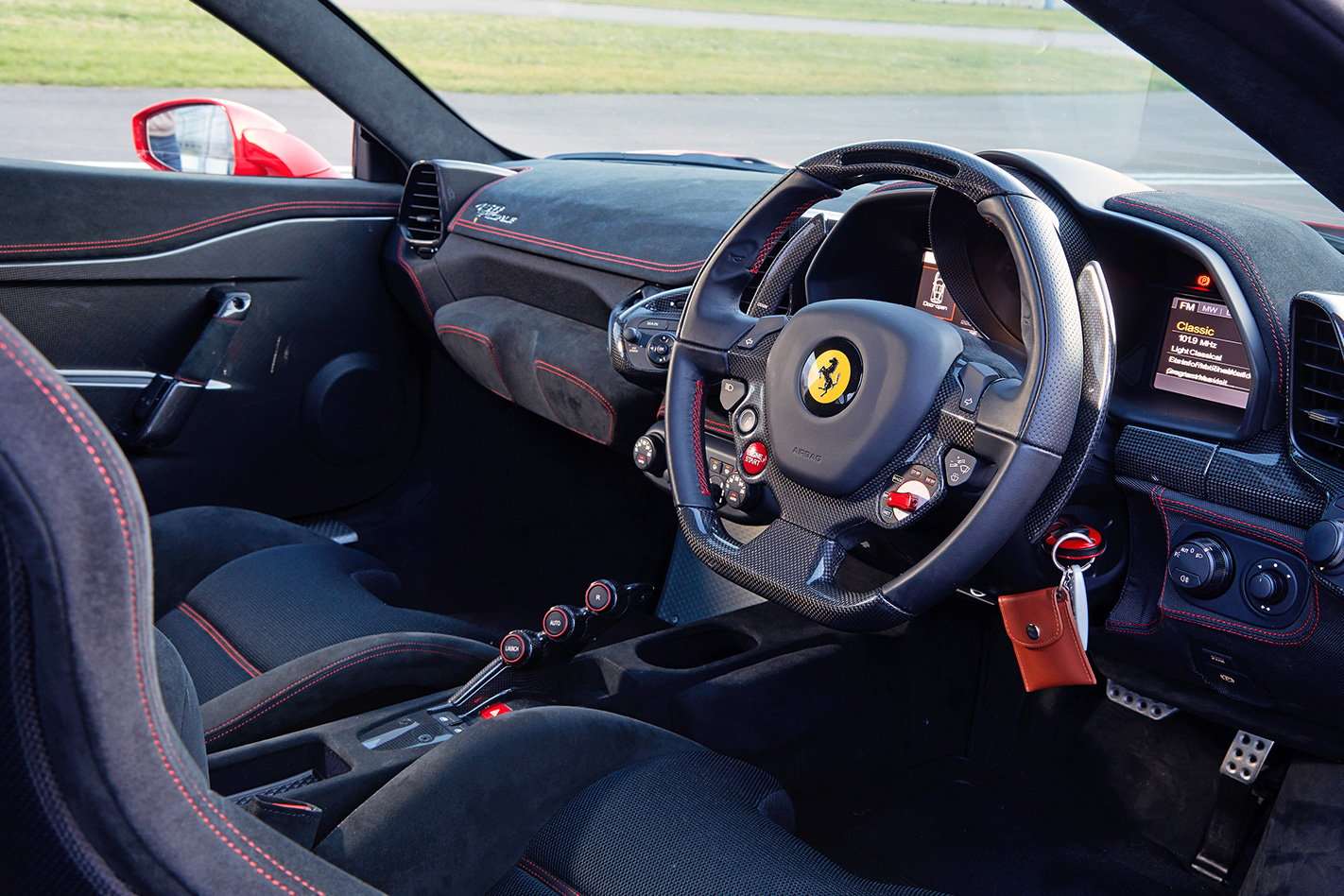
And maybe, if you have driven one before, you also feel yourself tensing up a little, because there’s nothing relaxing about a flat-plane-crank Ferrari V8. The sound is always hard, slightly strained, and the Speciale even more so. Building on the regular 458’s 4.5-litre engine – at 419kW and 540Nm, hardly a duffer – the Speciale employs a stratospheric 14:1 compression ratio courtesy of new pistons, high-lift camshafts, new intake runners and a free-breathing exhaust. Power is 445kW; the 0-100km/h sprint down two ticks to 3.0sec dead. The contrast with the current 488 is as stark as the Speciale’s cabin.
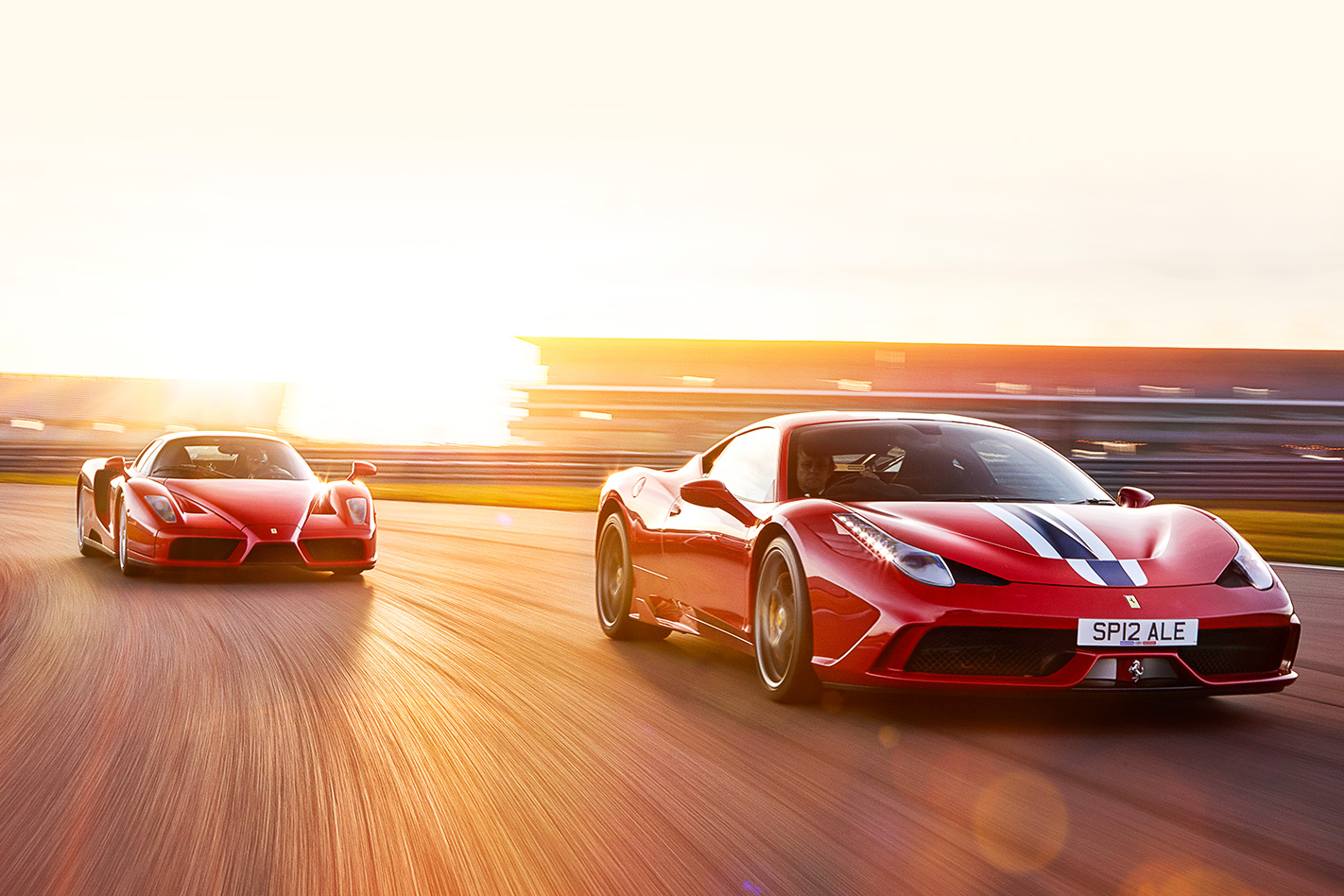
The Speciale laps Ferrari’s Fiorano test track in 1m23.5sec, which means nothing without some context, so here it is: that’s 1.5sec quicker than the 458 Italia. It’s quicker than the legendary Enzo too, by almost the same margin. It’s a testament to the pace of progress at Maranello that the Speciale, a more focused version of Ferrari’s bread and butter car (organic sourdough, with artisan-churned butter, mind) could lap its home circuit faster than what is widely considered to be the definitive hypercar of only a decade previously.
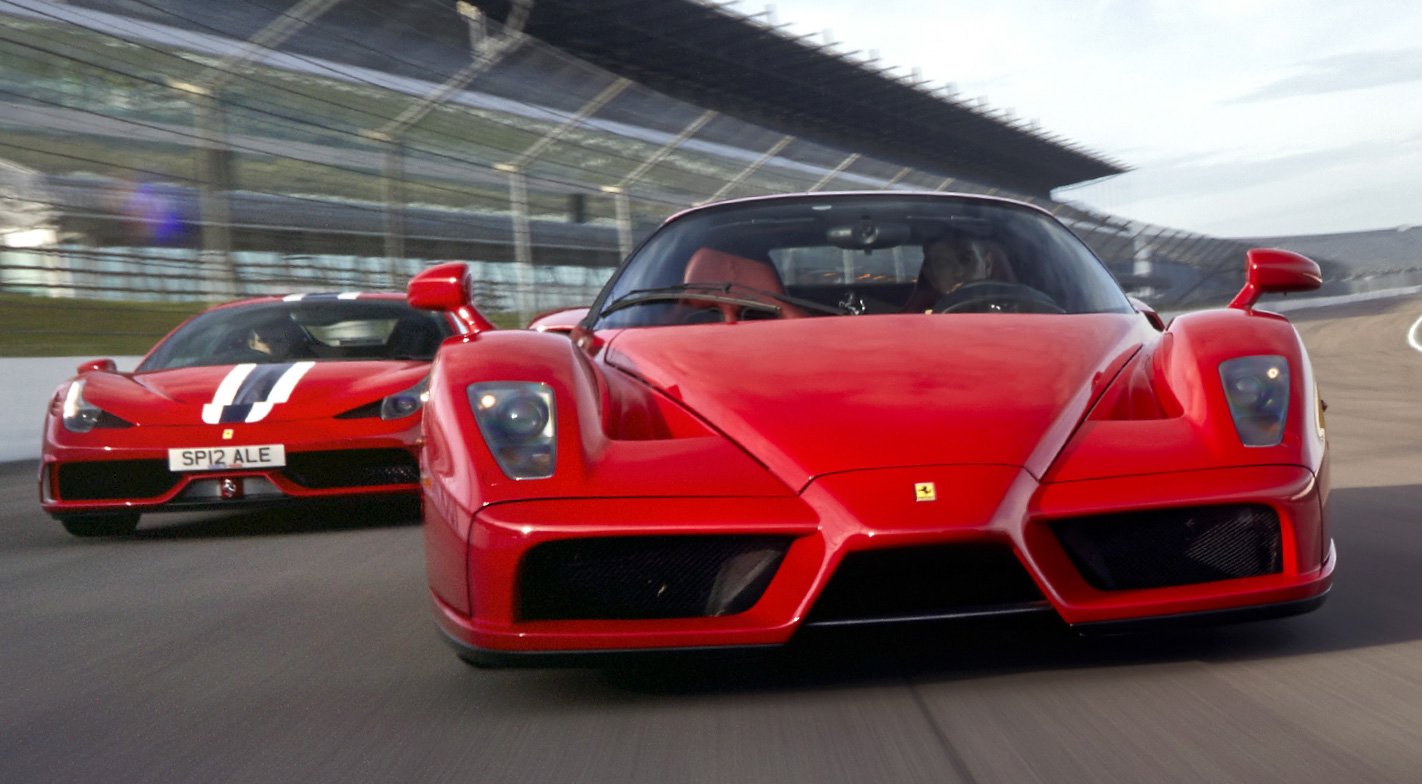
Like all of Ferrari’s special – as opposed to series – cars, the Enzo is built around a carbon chassis. That’s proper labour-intensive hand-laid carbon, not the type you’ll find on an Alfa 4C or McLaren 720S that’s technically inferior but easier to produce, and just as effective in the hands of the marketing department.
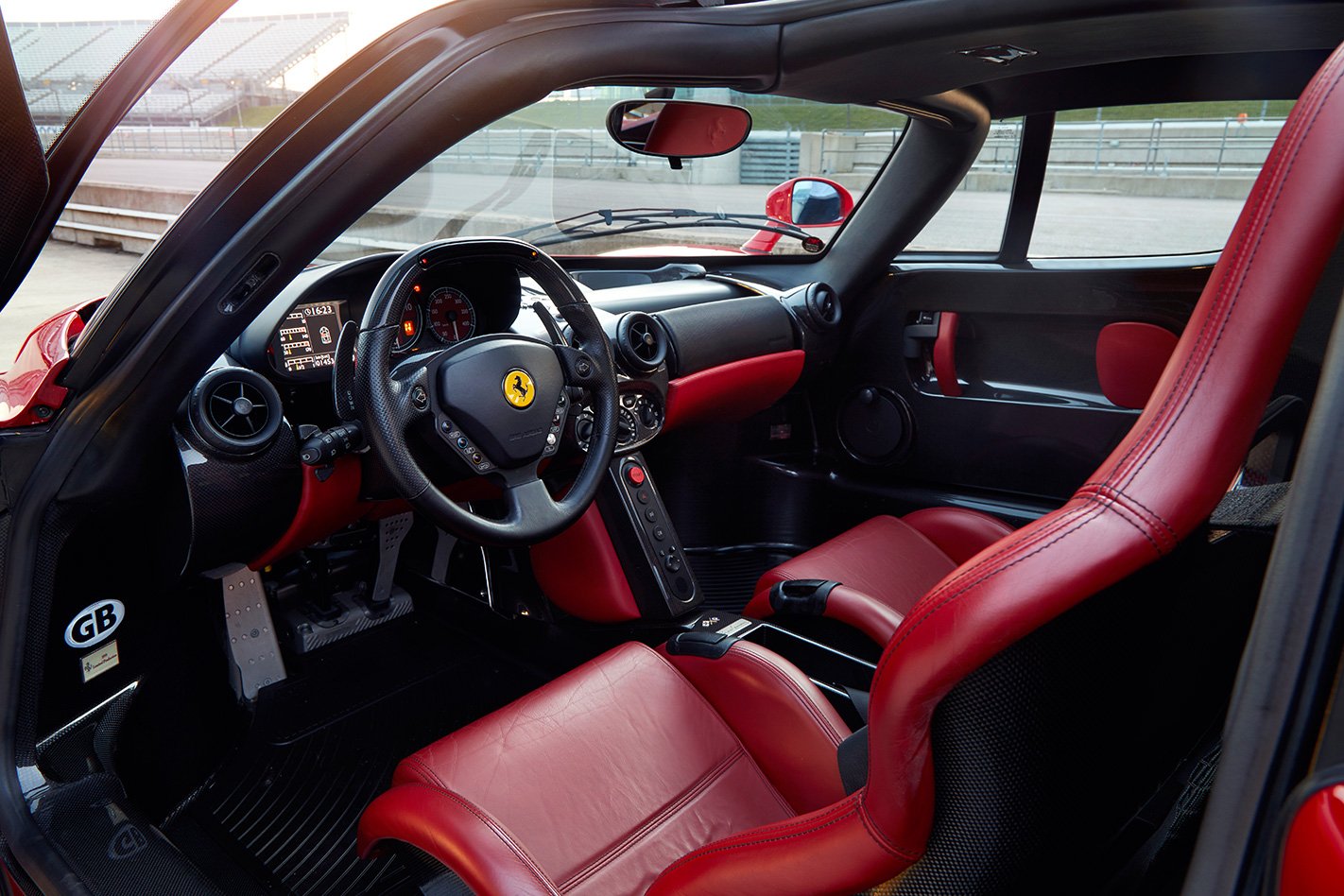
There’s no manettino drive mode dial, for instance, just a smattering of small buttons on the wheel, three simple rotary dials for the heating controls, and the starter located below them slap bang in the middle of the console. And this time you really do hesitate before putting your weight behind it. Finally prod it and 12 furious pistons start doing their damnedest to break free of their conrod tethers, filling the cabin with the most incredible mechanical noise. It’s hard-edged, yes, but there’s a sweetness here too; a rich texture you just don’t get with the V8.
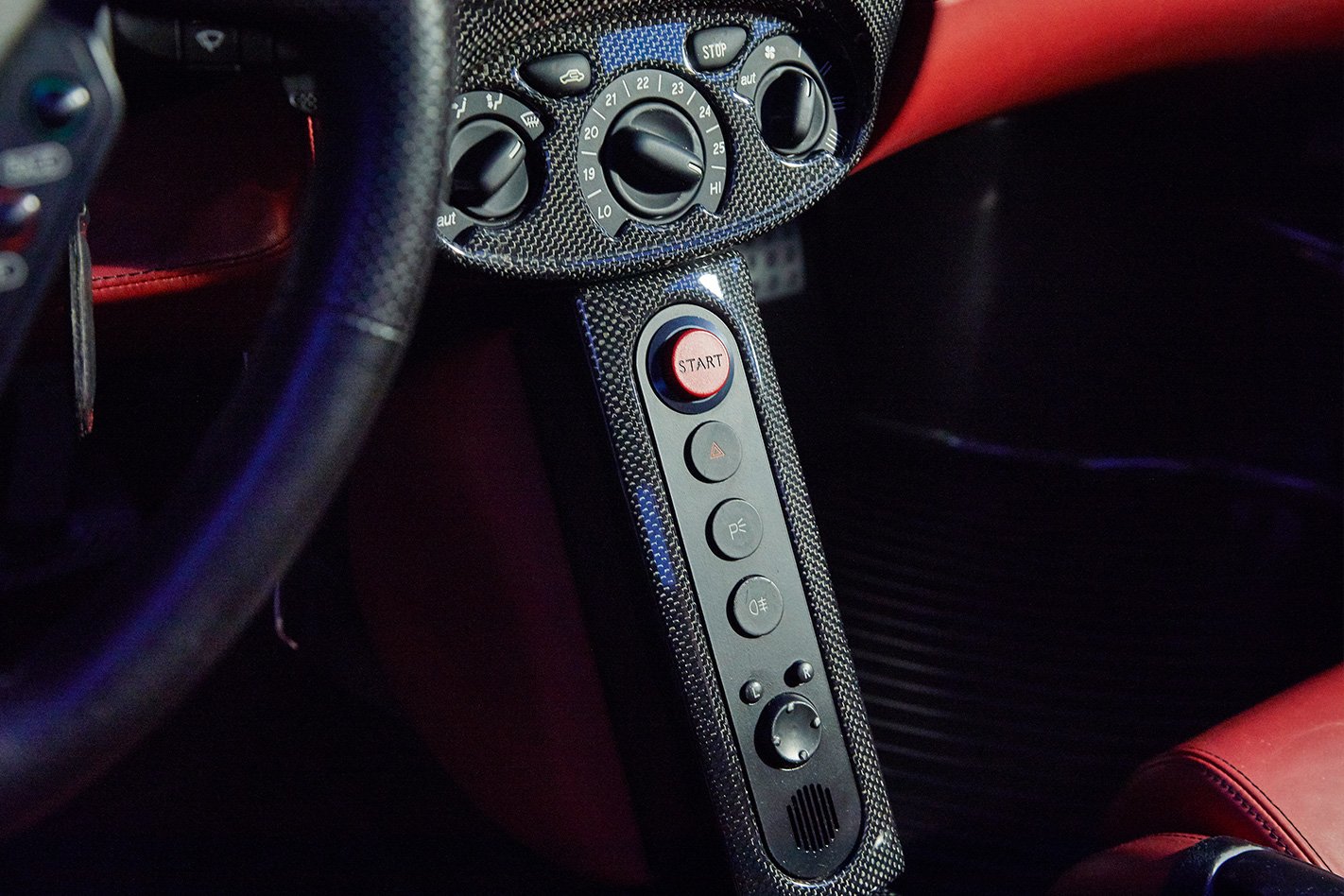
For all its swagger, the Enzo’s thundering 6.0-litre V12 actually makes less power than the modern 488 GTB, and doesn’t even wind as high. And though the naturally aspirated Speciale makes less power and torque, it pushes you deeper into the seat, hitting 200km/h in 9.1sec, more than a second sooner. And that’s not the only way in which the Speciale argues that newer is better. There’s the gearbox. Dual-clutch transmissions have revolutionised modern cars. They’ve made two-pedal driving acceptable to snobs who thought an automatic was beneath them.

Remember those pre-DCT days when we were obsessed with shift speeds? Kiss the 8000rpm redline in the Enzo, summon the presence of mind to reach out amid the cacophony to tug the exquisite carbon shift paddle and the tranny can swap cogs in 150 milliseconds. The Enzo might not do refinement but it’s got the important stuff licked. It’s shockingly violent, and pretty wonderful. How did we forget about this car? It’s also the last of its type, because for its LaFerrari successor, Maranello fused the V12 engine with a hybrid power pack with explosive results.
But the V12 lived on, and still lives on, in its purest form, in Ferrari’s front-engined GT cars.
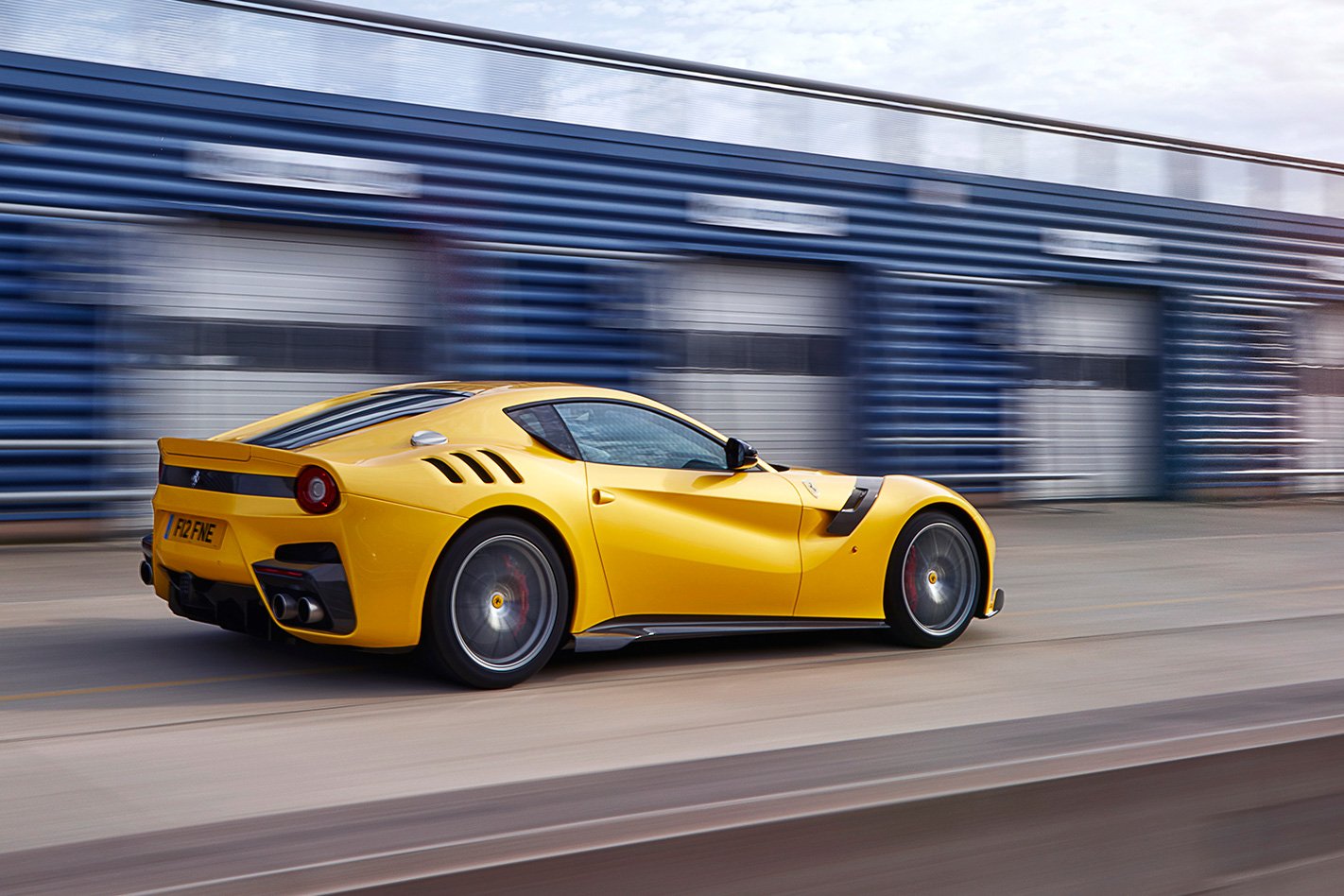
Maybe it was all those Top Trumps games, but old Jags aside, we tend to think of V12s as Italian creations, and it’s true, Ferrari’s first ever road car used a tiny 1500cc V12 that produced 88kW at 6800rpm. Consider now that the F12 tdf kicks out a stupendous 574kW that has the back tyres trying to rotate the earth like Shaggy and Scooby log-rolling across a lake to escape a pantomime yeti.
And you can forget any notion that just because the engine is up front that this is some sort of soft-touch GT. The tdf – named after the Tour de France race that front-engined Ferrari V12s dominated in the 50s and 60s – is to the F12 what the Speciale is to the Italia: one hard-nosed bastard of a car, limited to 799 units and all sold. Carpets? Don’t care for them. Ride comfort? Who needs it? Taste and decorum? You could always get an Aston if you don’t have balls.

Its designers even changed the rear bodywork to create an entirely different rear window line, improving downforce without the need to resort to spoilers. Like our mid-engined pair it’s spartan inside, though the paucity of luxury feels more incongruous here. It’s a vast cabin because the F12 is vast. And so very, very fast. So fast, it’s unnerving the first time you fully open the taps, and still terrifies the next dozen times after that. Send all 574kW to the rear tyres via the swift and slick dual-clutch transmission and you’ll hit 100km/h in 2.9sec.

Instead everything suddenly clears and screams for the sky instead, to a place a thousand rpm beyond where even the Enzo dares to tread. The thought that this engine – and its successor in the 812 Superfast – can’t live forever is enough to bring a tear to your eye, although that could just be because I’m about to hit 9000rpm at the top of fourth in the tdf and I think I want my mummy.
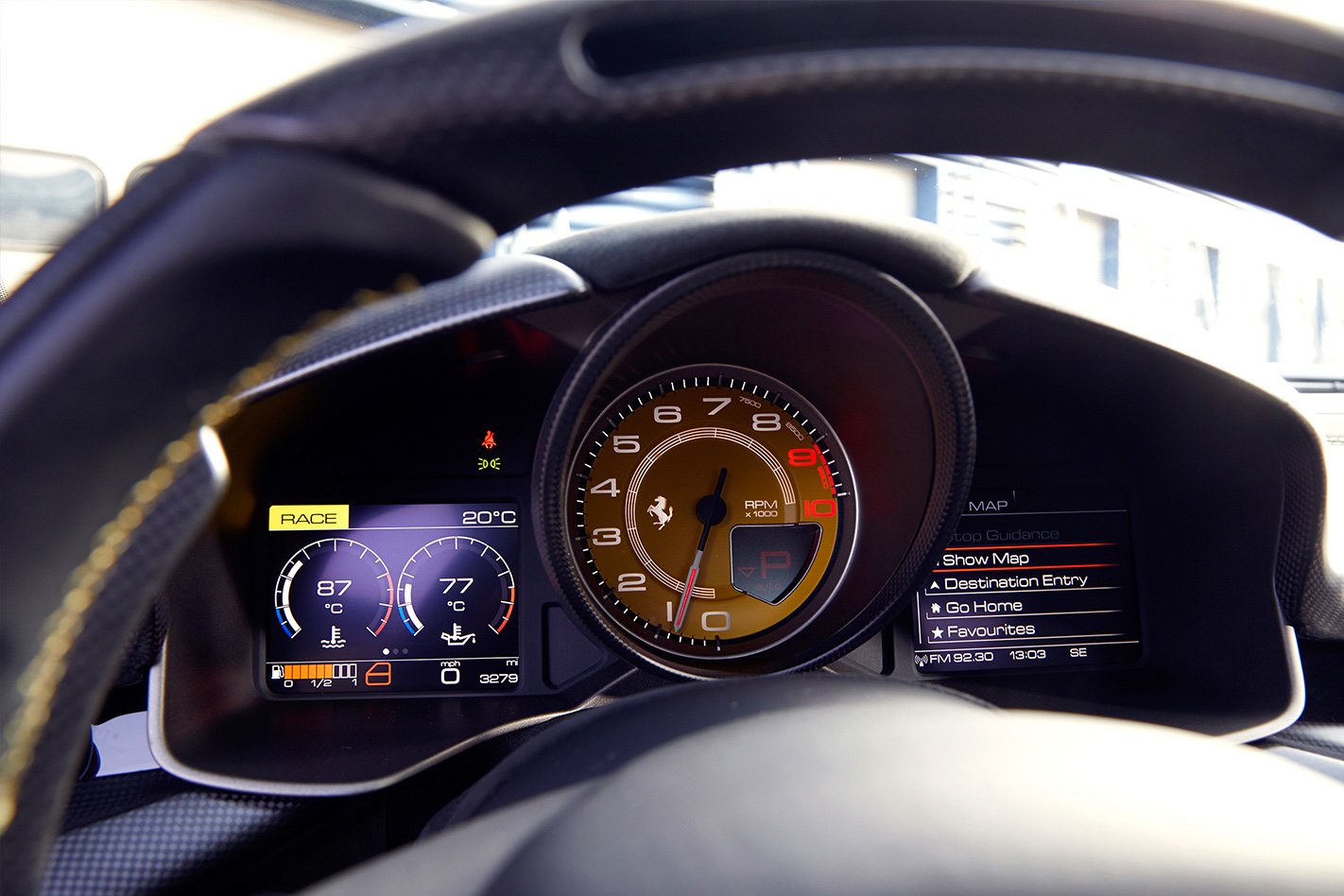
Though if you’re reading this, Sergio, I expect to have snuffed it by around 2060, so if you could just hang in there with internal combustion engines until then, that’d be great.
